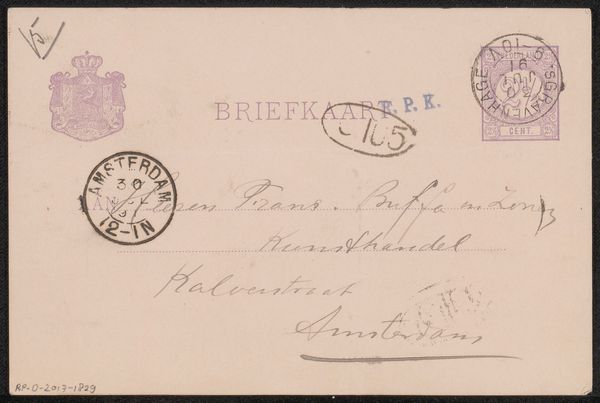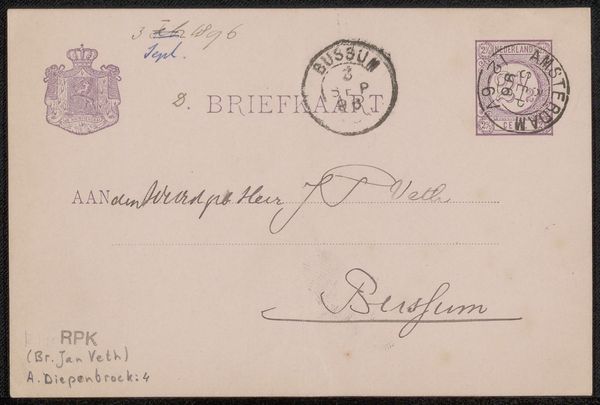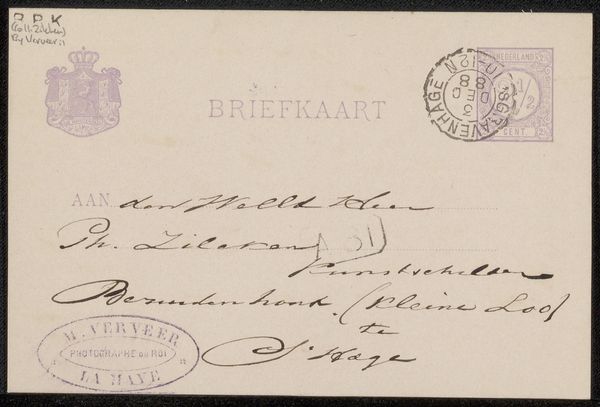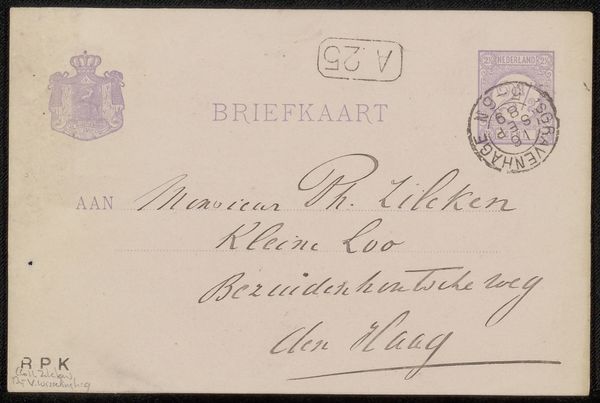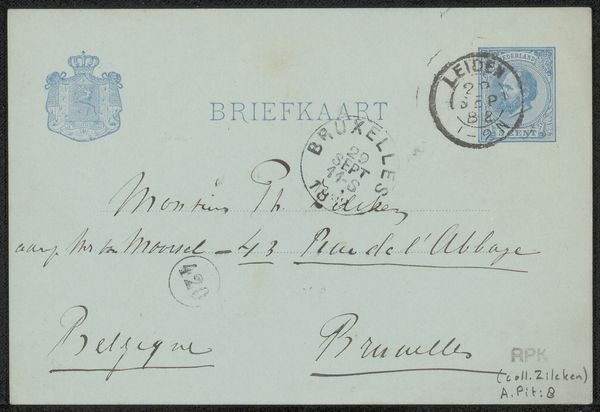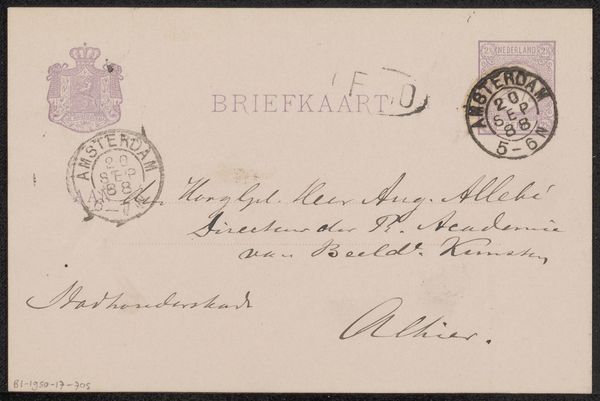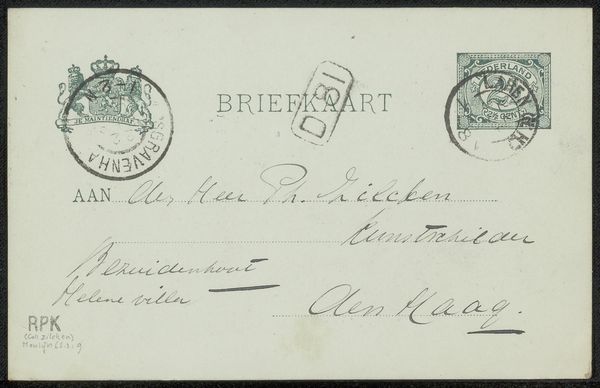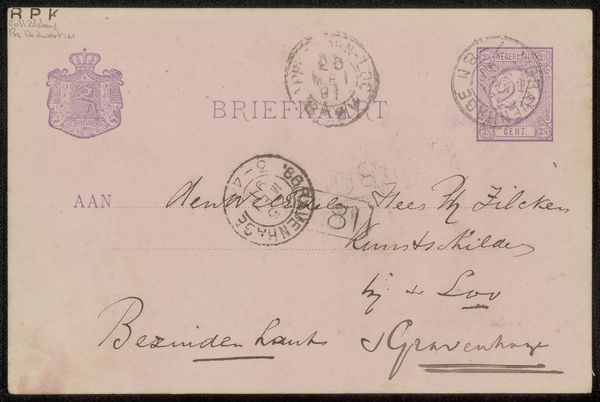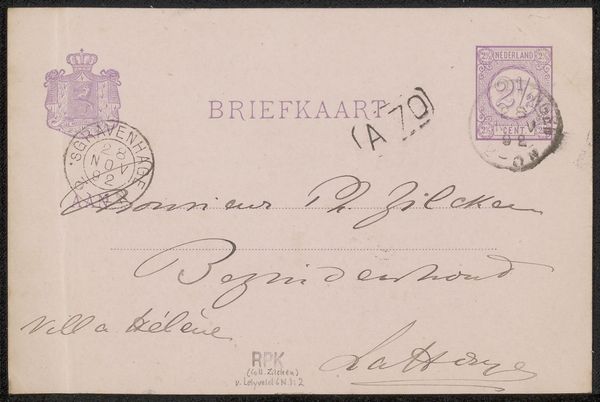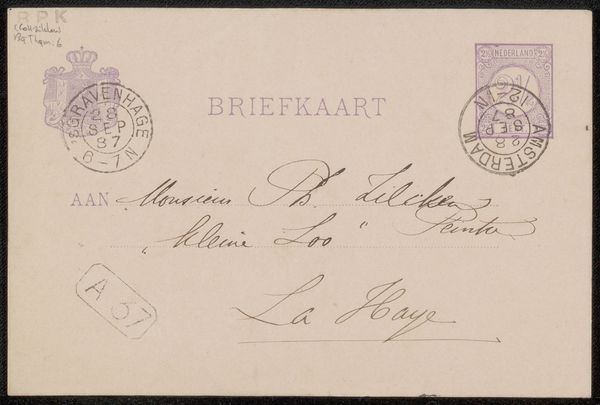
drawing, paper, ink
#
drawing
#
dutch-golden-age
#
paper
#
ink
#
calligraphy
Copyright: Rijks Museum: Open Domain
Curator: This drawing is titled "Briefkaart aan Philip Zilcken," and was created by Wally Moes before 1894, employing ink on paper. It is a postcard addressed to the artist Philip Zilcken. My first thought? A rather impersonal art form, though not unexpected for the time! Editor: The formality and precision here intrigue me. This piece, more than simply conveying a message, provides an intimate insight into the Dutch art world's social networks and communication practices during this late 19th century period. It’s almost like a glimpse into the lives of these artists. Curator: Yes, notice how Moes prioritizes elegant, legible script; her artistic labor here resides less in conventional pictorial language and more in careful calligraphy. There’s a certain compositional rigor; it isn’t only about neat handwriting, is it? The carefully considered balance of stamped seals and handwritten text works to achieve a particular type of artistic harmony. Editor: Considering the time this postcard was likely sent, imagine what those communication channels represented to marginalized figures - queer or female artists for example! Access to a network became vital in an era when art spaces were predominately occupied by male artists and tastemakers. Epistolary pieces like this reflect complex webs of professional connections within cultural spheres... Curator: Very interesting points, for sure. I still tend to look at it aesthetically. The postmarks and stamps introduce layers of texture and visual depth that, to my eyes, enhance this sense of graphic art and structure. It isn’t *just* communication, I guess, but aesthetic language of its time… Editor: True enough. But when situating a seemingly innocuous piece like this, let’s say in a discussion of women artists in the Dutch Golden Age, you can start thinking about hidden politics! It’s almost a protest – quiet though it might be, by refusing conventional gender roles. The simple act of maintaining such correspondences challenged established norms! Curator: So we started with this understated, unassuming little artwork that might initially strike someone as rather mundane. Editor: But looking closer, it turns out to offer a glimpse into broader histories of both personal expression and the social life of artists.
Comments
No comments
Be the first to comment and join the conversation on the ultimate creative platform.

